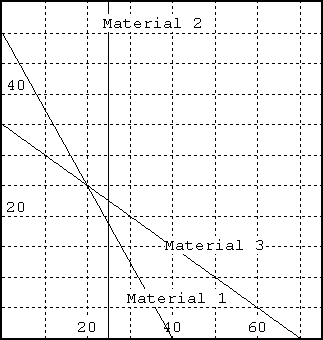a) If a reporter is selected at random from among the reporters who attended the special training, what is the probability that that reporter won an award?
b) Are the events "the reporter attended the special training" and "the reporter won an award" independent? For full credit, use the mathematical definition of independence to justify your answer.
The table below shows the commute times in minutes on days with light traffic (these occur with a probability of 80%) and on days with heavy traffic (20%).
| Light | Heavy | |
| Commuter Rail | 50 | 50 |
| Driving | 40 | 100 |
b) What choice does the expected value decision making approach recommend here? Show your work.
c) Once you've finished your first year on the job, you'll plan your travel by listening to traffic reports before leaving for work. What is the expected value of perfect information in this situation?
a) Draw a decision tree that illustrates all possible sequences of events in this scenario.
b) Suppose that the cost of designing a T-shirt is $100, the cost of driving and parking for free is $1000, and the cost of taking the commuter rail for a year is $1050. If you don't win the contest you'll continue riding the train; if you do you'll start driving. Assume that you don't know the costs of each option initially but that you can calculate them for free. What is the optimal decision strategy?
| Economy | Deluxe | Luxury | |
| Queen | $30 | $35 | --- |
| King | $20 | $30 | $40 |
This weekend, Round Tree predicts that there will be demand for 130 economy rooms, 50 deluxe, and 60 luxury rooms. There are 100 Queen type rooms and 150 King type rooms available. They have asked you to use linear programming to determine which rooms to rent at what prices.
a) This problem can be solved using five decision variables. Decide what decision variables you will use and (carefully!) describe them below.
b) What is the objective function for this linear programming problem?
c) One constraint in this problem is that there are only 100 Queen type rooms available. Write the inequality corresponding to this constraint.
d) Write the inequality corresponding to the constraint "there will be demand for 130 economy rooms".

| Maximize: | 25S | + | 40F | |||
| Subject to: | .5 S | + | .4 F | ≤ | 20 | (Material 1) |
| .2 S | ≤ | 5 | (Material 2) | |||
| .3 S | + | .6 F | ≤ | 21 | (Material 3) | |
| F,S | ≥ | 0 |
Here S represents the number of tons of solvent produced and F represents the number of tons of fuel additive.
a) Shade in the feasible region for this linear programming problem.
b) Find the optimal solution.
c) List the binding constraints.
d) Does the optimal solution change if the solvent and fuel base sell for the same price -- for example if the objective function changes to 30S + 30F? Show your work.
| Activity | Dependency | a = best | m = most likely | b = worst | crash cost | Expected | |
| A | - | 2 | 3 | 4 | 50 | ||
| B | - | 1 | 2 | 9 | 75 | ||
| C | A | 3 | 5 | 7 | 60 | ||
| D | B | 2 | 5 | 8 | 100 | ||
| E | C,D | 4 | 6 | 8 | 80 |
b) Use those completion times to create a project network.
c) What is the expected completion time of the project?
d) Which tasks are critical?